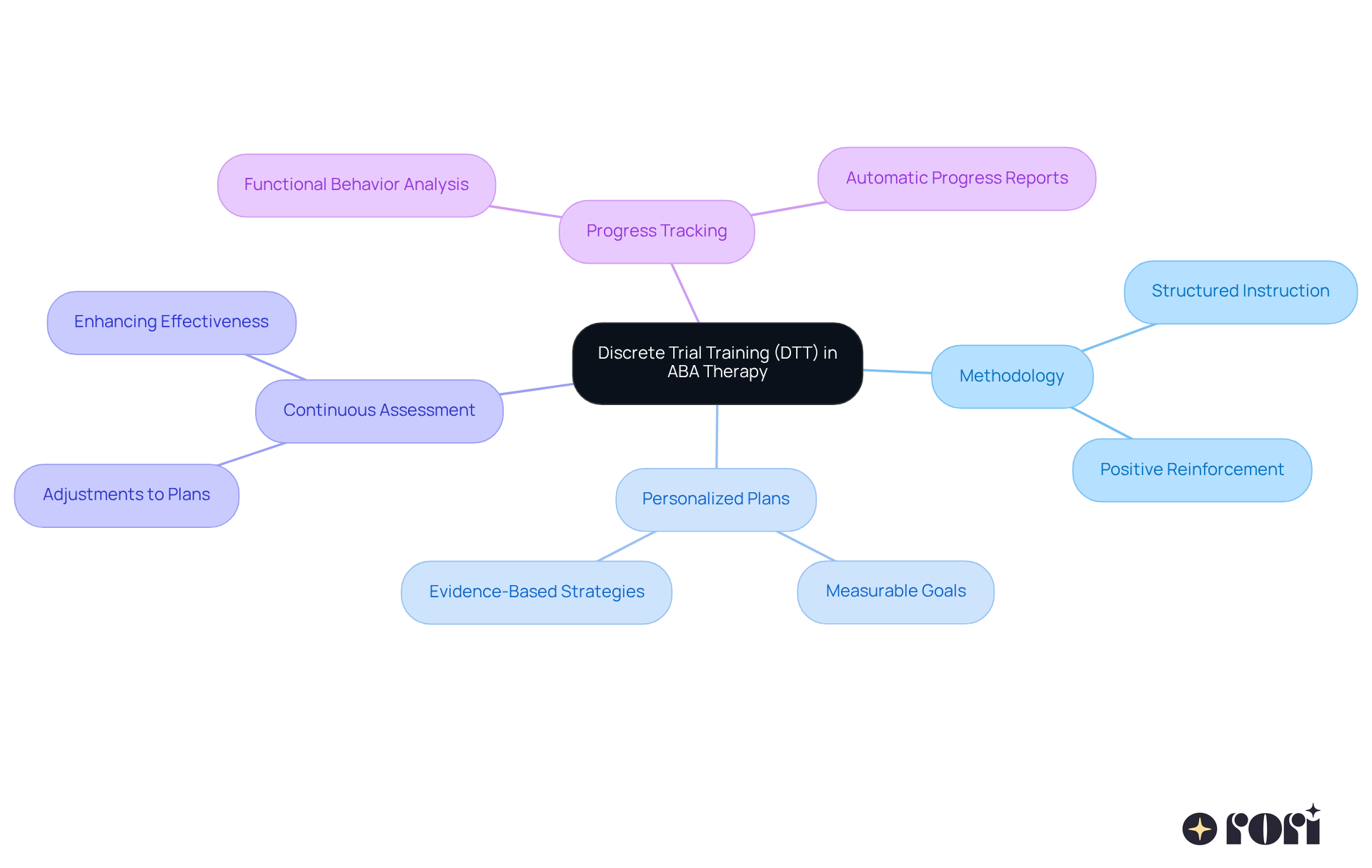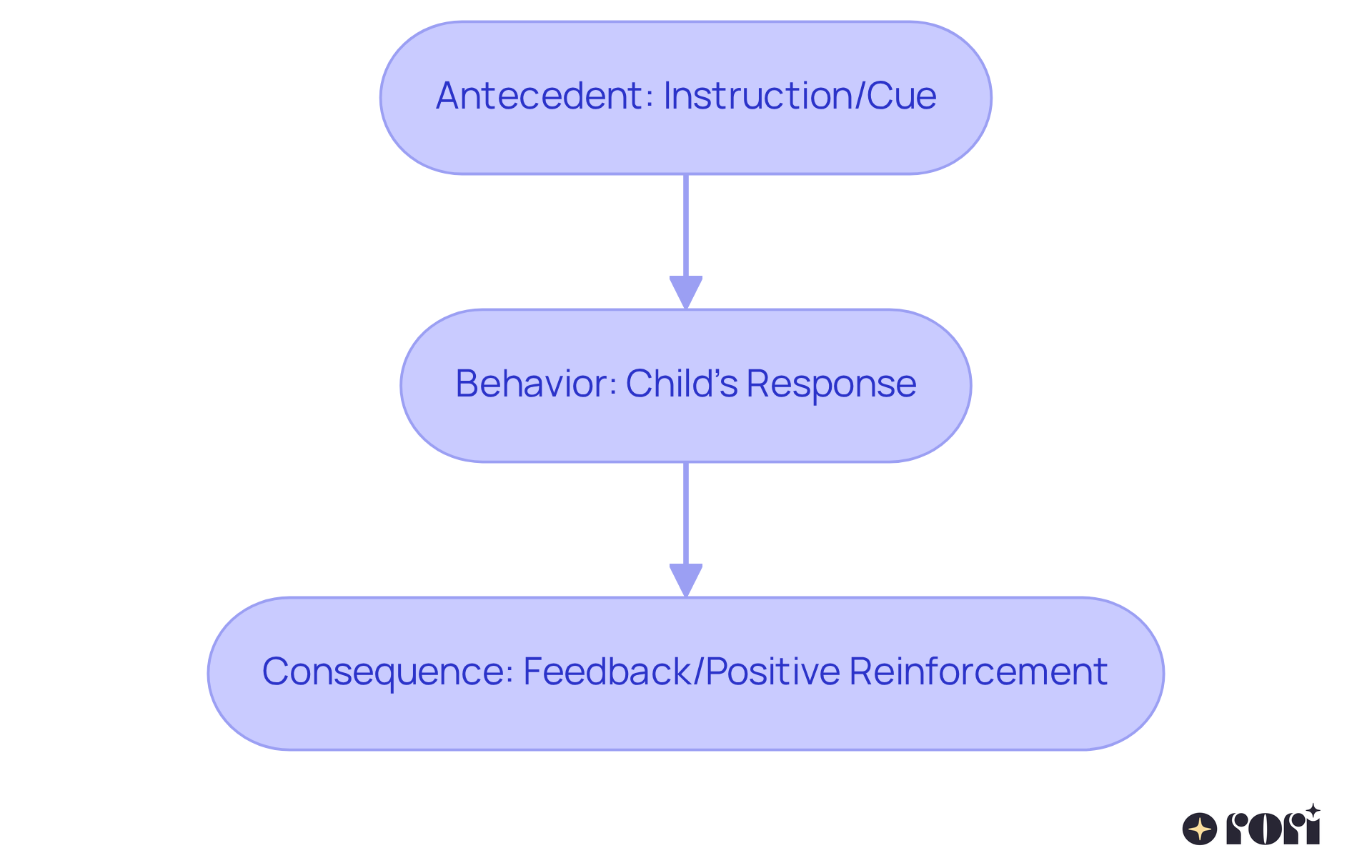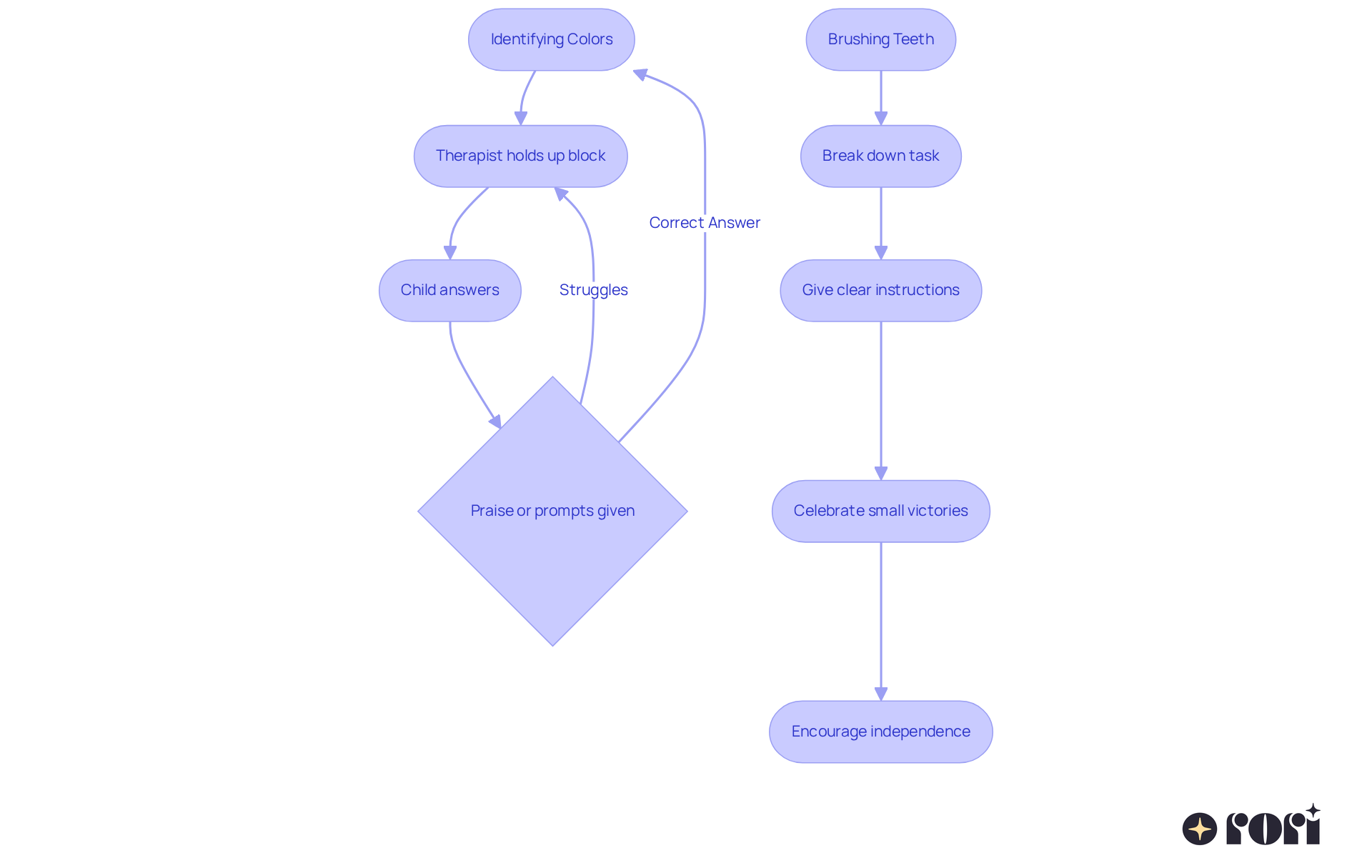Discrete Trial Training (DTT) in Applied Behavior Analysis (ABA) is a structured teaching method that breaks down complex skills into smaller, manageable parts. This approach allows for focused learning through repeated trials and immediate feedback. It's like taking one small step at a time, which can make a big difference!
What makes DTT so effective? Well, it’s all about its individualized approach, continuous assessment, and positive reinforcement. These elements work together to foster skill development and independence in individuals with autism. It’s truly inspiring to see how tailored support can lead to meaningful progress!
If you’re a parent navigating this journey, know that you’re not alone. Many families have found success with DTT, and it can be a wonderful resource to explore. Let’s dive deeper into this together and see how it can help your loved one thrive!
Understanding the intricacies of Discrete Trial Training (DTT) can truly enhance the effectiveness of Applied Behavior Analysis (ABA) therapy, especially for our loved ones with autism. This structured approach breaks down complex skills into manageable parts and fosters positive behavior changes through personalized, evidence-based strategies.
But with so many methods out there, how can we determine the true impact and relevance of DTT in achieving meaningful developmental outcomes? Let’s explore this together!
This article delves into the definition, evolution, and practical applications of DTT, uncovering its vital role in shaping learning experiences and promoting independence.
Discrete Trial Training (DTT) is a structured instructional method used in Applied Behavior Analysis (ABA), which helps clarify what does DTT mean in ABA by breaking down complex skills into smaller, more manageable parts. Each skill is taught through a series of separate trials. Here, the therapist provides clear guidance, encourages the child to respond, and reinforces correct answers with positive feedback.
A qualified behavior analyst creates personalized plans that include measurable goals and evidence-based strategies to promote positive behavior changes and skill development. This approach works particularly well for individuals with autism, as it allows for focused learning in a structured environment, minimizing distractions and boosting engagement.
What does DTT mean in ABA? It refers to the great aspect of DTT, which involves continuous assessment and adjustments to ensure the plans meet the individual’s needs. This responsiveness enhances the effectiveness of DTT, highlighting what does DTT mean in ABA, in achieving behavioral goals. Plus, our behavior care engine conducts functional behavior analysis for target behaviors and skills, generating automatic progress reports for clinician review. This feature makes tracking progress in DTT even easier!
Let’s explore this together! We’re here to help you every step of the way!

Discrete Trial Training (DTT) was introduced by Dr. Ivar Lovaas back in the 1960s, as part of his groundbreaking research on behavioral interventions for children with autism. Initially, DTT was used in intensive early intervention programs aimed at teaching essential skills, focusing on structured learning and positive reinforcement. Over the years, DTT has evolved significantly, adapting to new insights in behavioral science and technology. Today, what does DTT mean in ABA is recognized as a key part of Applied Behavior Analysis (ABA) therapy, often used in conjunction with other methods to enhance learning outcomes and facilitate skills transfer across different settings.
Historical case studies really highlight how effective DTT can be in autism interventions. They show us that kids who start DTT early, especially with intensive support, often see great progress over time. The structured and systematic approach of DTT makes it easy to track progress, allowing therapists to tailor techniques to meet individual needs. As a result, DTT not only boosts communication and social skills but also fosters independence in individuals with autism. This makes it an essential tool in today’s autism treatment strategies. Let’s explore this together!

Let’s dive into the key components of Discrete Trial Training (DTT) to understand what does DTT mean in ABA, which you might hear referred to as the ABCs of DTT. Each trial kicks off with an antecedent—a clear instruction or cue from the therapist, tailored just for your child's unique needs. Then, your little one responds, showing off their understanding or skills. Finally, we have the consequence, where immediate feedback is given, often as positive reinforcement for correct answers. This organized approach, crafted by certified specialists, allows for repeated practice and mastery of skills, helping to build independence and confidence in children with autism.
What’s really wonderful about DTT, and what does DTT mean in ABA, is the individualized planning and measurable goals that are crucial for fostering positive behavior changes and skill acquisition. Plus, the continuous assessment and adjustment of these plans ensure that we’re always responsive to your child’s evolving needs. Together, we can explore this journey and make a real difference in your child's development!

Imagine a young person learning to identify colors—what a fun journey! A therapist might hold up a bright red block and ask, 'What color is this?' When the child answers correctly, they receive praise or a small reward, creating a moment of joy. If they struggle, no worries! The therapist can offer gentle prompts or cues to help them along the way. This process not only enhances the young learner's education but also helps caregivers understand how to support their development effectively.
Now, let’s think about daily living skills, like brushing teeth. The therapist breaks this task down into manageable steps, giving clear instructions for each action. They reinforce the child’s efforts, celebrating small victories, and gradually encourage independence as the child masters each step. It’s all about building confidence and skills together! So, let’s explore this journey together and see how we can support our little ones every step of the way!

Discrete Trial Training (DTT) is such an important part of Applied Behavior Analysis (ABA) therapy, especially for enhancing learning for individuals with autism. By breaking down complex skills into smaller, manageable pieces, DTT creates a supportive space where children can truly thrive through structured instruction and positive reinforcement. This approach not only clarifies what DTT means in ABA but also highlights how effective it is in promoting skill acquisition and behavioral improvements.
Throughout this article, we’ve explored key aspects of DTT, including its journey over the years, the essential components, and how it can be applied in real-life situations. From the groundbreaking work of Dr. Ivar Lovaas to the modern adaptations that incorporate technology and ongoing assessment, DTT has shown itself to be a flexible and powerful tool in autism interventions. Its structured nature allows for personalized learning experiences that cater to each child's unique needs, helping them make strides in communication, social skills, and independence.
Ultimately, we can’t underestimate the importance of DTT in ABA therapy. As it continues to grow and embrace new ideas and methods, it remains a cornerstone of effective autism treatment strategies. For those supporting individuals with autism, understanding and implementing DTT can lead to meaningful changes in their development. By embracing this structured approach, we open doors to new learning possibilities, reminding ourselves that every small victory counts on the journey toward greater independence and confidence.
Let’s explore this together! Remember, we’re here to help you every step of the way!
What is Discrete Trial Training (DTT) in ABA Therapy?
Discrete Trial Training (DTT) is a structured instructional method used in Applied Behavior Analysis (ABA) that breaks down complex skills into smaller, manageable parts, teaching each skill through a series of separate trials.
How does DTT work?
In DTT, a therapist provides clear guidance, encourages the child to respond, and reinforces correct answers with positive feedback. This structured approach helps minimize distractions and boosts engagement.
Who benefits from DTT?
DTT is particularly effective for individuals with autism, as it allows for focused learning in a structured environment.
How are DTT plans created?
A qualified behavior analyst creates personalized DTT plans that include measurable goals and evidence-based strategies to promote positive behavior changes and skill development.
What is the role of continuous assessment in DTT?
Continuous assessment and adjustments ensure that the DTT plans meet the individual’s needs, enhancing the effectiveness of the training in achieving behavioral goals.
How does the behavior care engine support DTT?
The behavior care engine conducts functional behavior analysis for target behaviors and skills, generating automatic progress reports for clinician review, making it easier to track progress in DTT.